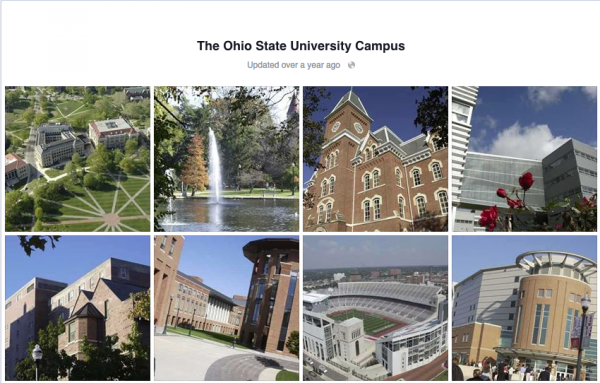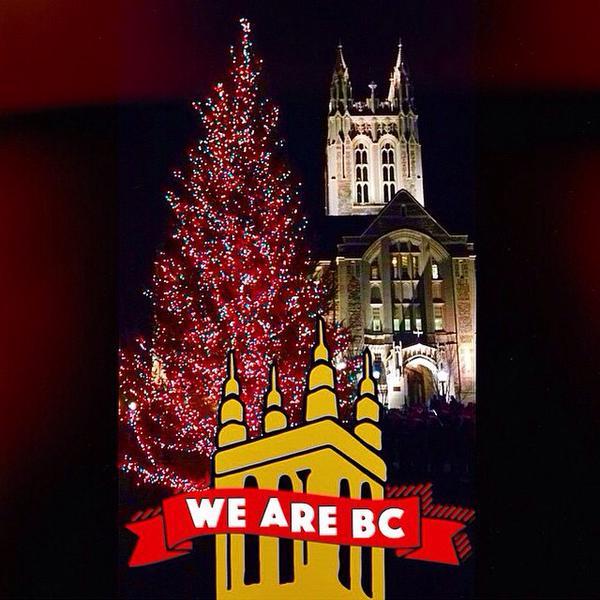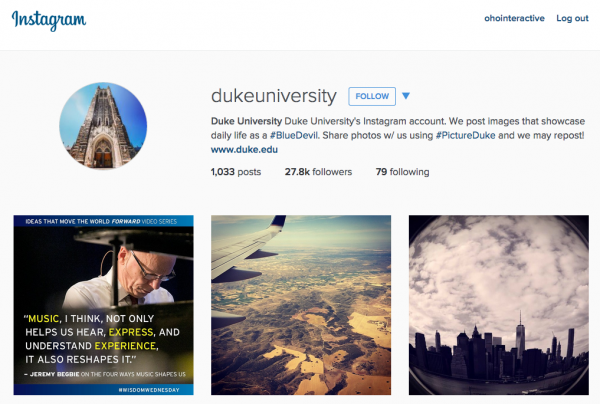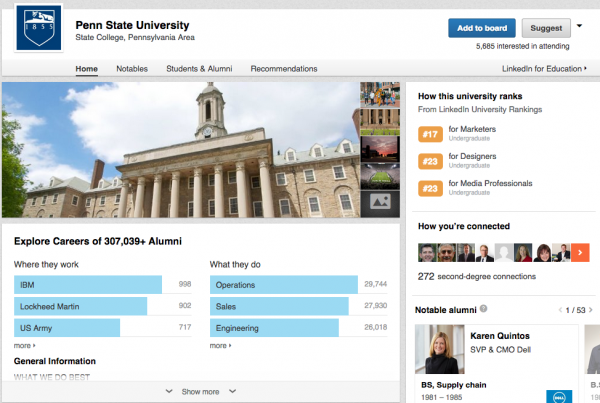How to Thrive in Higher Ed Social Media
Higher education marketers have a lot on their plates as they try to balance out reaching out to prospective college students, engaging their current students on campus, and finding a way of creating a community amongst alumni. Lucky for them, there are a wide range of social media outlets available that provide a diversified approach to engaging with students.
According to the annual Freshman Survey, 27.2% of students spend 6 or more hours on social media every week. Successful colleges and universities have recognized this outreach potential and have seen positive results from their proactive digital strategies. Since social media platforms can appear just as quickly as they disappear (pour one out for Myspace and Friendster), marketers need to jump on new opportunities as soon as they come. Below we’ll explain some of the best practices for popular social media platforms and give examples of some higher education institutions that are using them well.
Ah, Facebook - the social media platform that significantly changed the social media landscape ever since it was introduced back in 2004. Despite the claim that Facebook is dying out, a staggering 95% of college students are still using the platform. Since Facebook has a wide range of capabilities under its disposal, higher education marketers can use their Facebook pages in various ways:
-
Creating a campus tour album - While many schools are using more sophisticated technologies such as interactive 360 campus tours, prospective students can look to a university’s campus page to get a quick idea of what the campus is like.
-
Building communities within the school - Whether it is a group for the 2014 alumni class, extracurricular activities, or a dorm building, group pages allow students in similar circles to see what’s going on and engage with other students.
-
Showcasing faculty and student achievement - Some of the best research and innovation comes from the bright minds at universities. Facebook is a great spot for sharing these accomplishments so others can recognize it.
-
Facilitating campus pride - Sometimes it is difficult to keep up campus spirit when everybody is dealing with their busy schedules. Encourage students to root on their athletic teams in their next big game or let people know about a campus wide event that is going on.
Ohio State University is an example of a school that uses Facebook well. They have fan pages for all of their athletic teams, are constantly updating their page with current events that are happening around campus, and have a campus tour album in their photo section.

The social media platform built upon the idea of quickly sending out 140 characters-or-less messages was designed for the multitasking minds of Generation Z. According to the U.S. National Library of Medicine, the average American’s attention span has decreased all the way down to eight seconds. Twitter provides a resource to students that allows them to easily digest information and immediately move on to something different. Some of the practical uses for Twitter in higher education are:
-
Using hashtags for events - Universities can easily create a forum for asking questions and creating conversations by making a hashtag related to an event. This can be anything from a dorm #FreePizzaEvent or a classroom #BioChat.
-
Periscope - Although this application is a new tool in Twitter’s arsenal, this live-streaming service can become a unique way that people on or off campus can see what’s going on. For example, David Muir used Periscope during Northeastern University’s 2015 Commencement Speech to show his point of view from the podium.
-
Live updates or emergency situations - In addition to text messages and emails, Twitter is a good avenue for getting emergency information out to a campus. The ability to retweet allows students to quickly share important information with their peers.
-
Answering questions - A lot of people will use Twitter when they have a quick question they want to forward to a company or person. The same should work for universities, providing a way for prospective students and current students to get information easily. According to Klout, Stanford University is one of the most influential higher education insitutions with over 300,000 followers on Twitter. As seen below, they used the #Stanford15 hashtag in order to congregate all of the tweets from the commencement ceremony that day.
Watch the full #Stanford15 Commencement ceremony here: http://t.co/5v54C9f0dG pic.twitter.com/WYwGcBOnpR
— Stanford University (@Stanford) June 14, 2015
Snapchat
Many pegged Snapchat as a fad even after they declined Facebook’s $3 billion acquisition offer, but don’t be fooled - Snapchat is a big social media player. Even better for higher education marketers, it is absolutely huge on college campuses. A 2014 study from Sumpto discovered that a whopping 70 percent of college students post a snap daily. Snapchat is by far the most popular social media outlet for daily posting compared to Twitter (46%), Facebook (11%), and Instagram (10%). If Snapchat is so popular, what can universities do with it?
-
Campus Stories - This expands on Snapchat’s “Our Story” feature, which lets Snapchat users at a particular event upload a snap to a central live feed. With this version, anybody at the school can post images and videos about what they are doing on campus. Don’t worry though, Snapchat filters out the submissions so it isn’t just filled with parties and rowdy behavior.
-
University account - If a university wants complete control of what gets posted under their institution’s name, they can create their own account and post pictures to their story when they please.
-
Geofilters - Similar to campus stories, geofilters detects where users are and provide them a chance to show off what they are doing on campus. Geofilters work by adding a customized design to a photo to give them a unique location-based spark. Snapchat has even been known to make their own university geofilters for big NCAA events going on. Anybody can submit geofilters, so get one of your digital design majors on it!
Below is an example of the Geofilter used by Boston College. As many other geofilters, the designs remain pretty simple but show off a unique aspect of their university.

Visual content is king, and Instagram is taking full advantage of it. Despite only being around for five years, Instagram’s massive growth has allowed the platform to become one of the major social media staples. Instagram is particularly appealing for younger generations as it allows them to connect with celebrities and brands, share their lives, and demonstrate their craft in photography. So how can higher education institutions make this platform work for them?
-
What’s campus like? - Instagram is the perfect place to showcase what the campus and surrounding community near the school is like. By going through a college’s Instagram page, a prospective students should be able to get a feel for what it would be like going there.
-
Outsourcing content to students - Similar to Twitter, Instagram implements a hashtag system that allows individuals to find the content they are looking for. By setting up a hashtag related to your college, you can easily curate and repost worthy pictures created by your community.
-
Building a brand - Whether it's showing off a prominent sports team, international opportunities abroad overseas, or a rich history of excellence, Instagram is a place to demonstrate what your value proposition is to students.
Duke University’s Instagram effectively uses the hashtag #PictureDuke to curate some of its content from the community. The page shows off everything from students studying abroad to quotes from notable researchers at the university.

Jobs are on the forefronts of students’ minds. And of course they are — 86% of college students named the prospect of getting a better job as the reason why they decided to go to college in the first place. That’s why so many students are flocking to LinkedIn to build networks and search for potential opportunities. Students represent the fastest growing demographic on the platform, and there are already over 39 million students and recent graduates with profiles. If students are coming through the network in waves, higher education marketing teams should be right behind them implementing their strategies.
-
Showing off alumni - Has one of your alumni become the CEO of a Fortune 500 company or just came through with a groundbreaking piece of research? Show them off! Everybody loves a good success story. It can show off how your university may just be the first step in something potentially much greater in the future.
-
What’s your school known for? - Just by setting up a profile on LinkedIn, a load of data gets compiled from the alumni base at your school. On a university page, visitors will be able to see the alumni demographics for where they live, where they work, and what they do. It can become a good spot to see who is hiring your students and which programs are having the most success.
-
Create groups - Similar to Facebook, LinkedIn can be a good hubspot for communities to communicate and come together on. These can be for alumni groups, academic programs, or even clubs.
Penn State’s LinkedIn page is an informative spot to find all the basics about the school. You can see who their most notable alumni are, how they rank in LinkedIn’s University Rankings, and can find out more about the demographics of the school.

These are simply just a few of the social media platforms that are popular amongst college students right now. Other major platforms — such as Youtube and Vine — can always be integrated within these social platforms to provide differentiated content. Given the rapidly evolving landscape of social media, this list make look completely different five years from now. Therefore, higher education marketers need to have a dynamic strategy that allows them to identify new entrants and adapt to various changes. For now, setting up these platforms is an important first step in broadening your engagements with the higher education community.